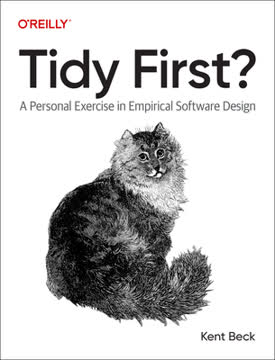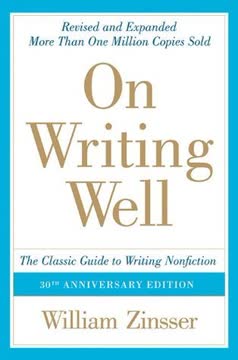Key Takeaways
1. Capture Thoughts to Free Your Mind
The mind is for having ideas, not holding them.
Externalize thinking. Our brains are better at generating ideas than storing them. Writing down fleeting thoughts, tasks, and reminders frees up mental space and allows us to focus on deeper thinking and creative problem-solving. This externalization is the first step in transforming amorphous thoughts into coherent ideas.
Fleeting notes are key. Fleeting notes are quick reminders of information, captured on the go. They are not meant to be permanent but serve as the raw material for more developed ideas. Use whatever capture tool is most convenient – a notebook, scraps of paper, or a note-taking app.
The inbox system. Stage your fleeting notes in an inbox for later processing. This inbox serves as a reminder of the special nature of the zettelkasten, ensuring that only the most interesting and relevant ideas make it into your network. Regularly processing your inbox prevents it from becoming overwhelming and ensures that your zettelkasten remains a valuable resource.
2. Reference Notes Bridge Consumption and Creation
A reference note allows us to take notes on each of these without disturbing our flow, giving us a place to return when we’re finished.
Capture while engaging. Reference notes are taken while actively reading, listening, or watching media. They capture key ideas and passages, creating a personal index of consumed content. Unlike fleeting notes, reference notes are stored in your zettelkasten, acting as a bridge between source material and your main notes.
Varied approaches. There are many ways to take reference notes. You can simply jot down page numbers and keywords, add labels to track themes, or include brief notes about the idea's relevance. Digital tools allow for capturing whole quotes. The key is to find a method that works best for you.
Marginalia as reference. Don't underestimate the power of writing directly in books. Marginalia, when combined with a reference note, can be a powerful way to capture and leverage insights. Mark up interesting passages and then pull the most relevant ones into a reference note.
3. Main Notes: The Building Blocks of Thought
Main notes are what your passing captures become.
Single idea focus. Main notes are the core of your zettelkasten. Each note should contain a single, well-defined idea, making it easier to connect and repurpose. This atomicity allows for greater flexibility and creativity in your thinking.
Essential components. A main note should include a title, the single idea, a link to another idea in your zettelkasten, a quote or reference to the source, a record of where the idea has been used, and a unique ID. These elements make the note more useful, connectable, and memorable.
Processing fleeting notes. To create main notes, process your inbox of fleeting notes. Rewrite the idea in complete sentences, consider its relationship to other ideas in your zettelkasten, and add the appropriate alphanumeric ID. Give the note a title that briefly sums up the idea.
4. Connect Ideas to Spark New Insights
A Luhmann-style zettelkasten is held together by a network of connected ideas.
Relationships are key. A zettelkasten is not just a collection of notes; it's a network of connected ideas. Establishing relationships between ideas is crucial for generating new insights and developing long-form arguments. Links allow you to create trains of thought that can be retraced and expanded upon.
Interrogate your ideas. When making connections, don't be afraid to stretch the relevancy of your ideas. Ask questions, read the subtext, and consider how an idea might inform seemingly disparate topics. Even if a connection feels forced at first, it may reveal surprising insights down the line.
Contextualize connections. Clearly state the reason for connecting two or more ideas. This will help you remember the relationship in the future and increase your understanding of the ideas themselves. Avoid "link dumping" by providing context for each connection.
5. Alphanumeric IDs: Navigating the Idea Labyrinth
The alphanumeric system, later dubbed “folgezettel” or “follow-up note,” allowed Luhmann to work non-hierarchically.
Unique identification. Alphanumeric IDs, or folgezettel, give each note a permanent identity that can be referenced regardless of changes to its content. This system allows you to locate notes, reconstruct trains of thought, and establish connections between ideas.
Non-hierarchical system. The alphanumeric system is not meant to create a hierarchical tree structure. Ideas are imported in the order they are created, not in the order that makes the most semantic sense. This allows for ideas to branch off in any direction.
Section headings for organization. Section headings can be added to group related notes, but these labels should be applied after ideas have been added, not used to decide where a new idea should land. Section labels are only used to help locate areas of your zettelkasten.
6. Embrace Anarchy: High-Level Views for a Chaotic System
The slip box provides combinatorial possibilities which were never planned, never preconceived.
Distributed network. The main compartment of your zettelkasten is an anarchy of ideas, a distributed network where every idea is both an intersection and a point of departure. This non-hierarchical structure allows for unexpected connections and novel insights.
Hub notes as access points. Hub notes help you navigate your zettelkasten by pointing toward the various places your thinking has gone. They are access points to different trains of thought, allowing you to quickly jump into frequently engaged areas of your slip box.
Structure notes for semantic coherence. Structure notes are spaces where the contents of trains of thought can be developed further. They allow you to organize and explain the relationships between ideas, creating a more coherent understanding of your thinking.
7. Zettelkasten Guides, But You Must Write
A zettelkasten will not tell you what to write.
Zettelkasten as guide. A zettelkasten can point you toward what to write about by revealing areas of increased connectivity, reference notes showing what's been catching your attention, and structure notes providing a foundation for writing. However, the zettelkasten should not do the writing for you.
Avoid fragmentation. Don't simply copy notes into your manuscript. Rewrite ideas to fit the context of your argument, adding semantic connective tissue to create cohesion. Remember, your zettelkasten is a tool, not a substitute for your own thinking and writing.
Embrace editing. Editing is crucial for creating clear and compelling writing. Be willing to cut unnecessary content, lean into footnotes and endnotes, and remember that not every note in a train of thought needs to be included in your manuscript.
8. Writing for Readers: Engage, Refine, and Grow
Meaning is created in community.
Writing for engagement. Writing for readers is about more than just expressing your ideas; it's about engaging in a conversation. Publish your writing to get feedback, challenge your beliefs, and refine your thinking.
Short-short content for testing ideas. Use main notes to create tweets, toots, and other short-short forms of online content. This allows you to quickly test ideas and get immediate feedback from your audience.
Blogs for themed exploration. Use your zettelkasten to generate blog posts on a specific theme. This allows you to vary post lengths and create a cohesive body of work. Engage with commenters to generate new ideas and inform future posts.
9. Manage Your Writing: Systems for Every Stage
Writing is bigger than writing.
Daily journal for tracking progress. Keep a daily journal to record your activities, thoughts, and suggestions for future work. This journal serves as the central hub of your workday, helping you stay organized and focused.
Creative logs for project management. Use creative logs to track progress on specific writing projects. Record what you did, what needs attention, and suggestions for the next writing session. This will help you pick up where you left off and maintain momentum.
Task-focused project management. For writing with a deadline, use a task-focused project management system. Define the project, brainstorm tasks, gather resources, do only today's tasks, and record progress in a log. This will help you stay on track and meet your deadlines.
Last updated:
FAQ
What's "A System for Writing" about?
- Holistic approach: "A System for Writing" by Bob Doto introduces a holistic approach to writing that integrates note-making, idea capturing, and writing as a continuous process.
- Zettelkasten method: The book focuses on the Zettelkasten method, a system for organizing and connecting ideas to facilitate writing and creativity.
- Practical guidance: It provides practical guidance on capturing fleeting thoughts, making main notes, and connecting ideas to produce coherent writing.
- Writing as a process: The book emphasizes writing as a process that includes capturing, refining, and connecting ideas before they are transformed into text.
Why should I read "A System for Writing"?
- Enhance creativity: The book offers techniques to enhance creativity by capturing and organizing ideas effectively.
- Improve writing skills: It provides a structured approach to writing that can help improve writing skills and productivity.
- Unique methodology: The Zettelkasten method is a unique and unconventional approach that can offer new insights into personal knowledge management.
- Comprehensive guide: It serves as a comprehensive guide for writers looking to develop a consistent and productive writing practice.
What are the key takeaways of "A System for Writing"?
- Note-making importance: The importance of capturing fleeting thoughts and transforming them into main notes for future use.
- Connecting ideas: The book emphasizes the significance of connecting ideas to create a dynamic network of thoughts.
- Writing process: Writing is presented as a process that involves capturing, refining, and connecting ideas before they are written down.
- Zettelkasten benefits: The Zettelkasten method is highlighted as a tool for enhancing creativity and writing productivity.
How does the Zettelkasten method work according to Bob Doto?
- Capture ideas: The method involves capturing ideas in the form of fleeting and reference notes.
- Transform notes: These notes are then transformed into main notes that are stored and organized.
- Connect ideas: Main notes are connected to each other to form a network of ideas that can be used for writing.
- Bottom-up approach: The Zettelkasten method is a bottom-up approach where the structure emerges from the relationships between ideas.
What are fleeting notes and how are they used in the Zettelkasten method?
- Quick captures: Fleeting notes are quick captures of thoughts, ideas, or reminders that are taken on the go.
- Temporary storage: They are stored temporarily in an inbox until they can be processed into main notes.
- Potential transformation: Not all fleeting notes become main notes; only those that are relevant and valuable are transformed.
- Foundation for main notes: Fleeting notes serve as the foundation for creating more detailed and connected main notes.
What are main notes in the Zettelkasten method?
- Single idea focus: Main notes focus on a single idea and are more detailed than fleeting notes.
- Connected network: They are connected to other notes to form a network of ideas.
- Components: Main notes typically include a title, a single idea, links to other notes, and sometimes quotes or references.
- Building blocks: They serve as the building blocks for writing and developing complex trains of thought.
How does Bob Doto suggest connecting ideas in the Zettelkasten method?
- Establish relationships: Ideas are connected by establishing relationships between them, often using links or references.
- Contextual connections: Connections are made by considering the context and relevance of ideas to each other.
- Dynamic network: The goal is to create a dynamic network of ideas that can be used for writing and creativity.
- Explore possibilities: Connecting ideas allows for exploring new possibilities and insights that may not have been initially apparent.
What role do hub notes and structure notes play in the Zettelkasten method?
- Hub notes: Hub notes act as access points or highways between topics, helping to orient the user within the Zettelkasten.
- Structure notes: Structure notes organize related ideas into a coherent train of thought, often resembling a table of contents.
- High-level views: Both types of notes provide high-level views of the Zettelkasten, making it easier to navigate and engage with ideas.
- Facilitate writing: They facilitate writing by organizing and making sense of the network of ideas within the Zettelkasten.
How can the Zettelkasten method help in writing for readers?
- Idea development: The method helps in developing ideas into coherent writing by organizing and connecting them.
- Reader engagement: Writing for readers involves putting ideas out into the world to engage with others and gain feedback.
- Content creation: The Zettelkasten method supports content creation for various formats, including blogs, articles, and books.
- Continuous process: Writing is seen as a continuous process of capturing, refining, and connecting ideas for reader engagement.
What are some common misconceptions about the Zettelkasten method?
- Not a second brain: The Zettelkasten is not a comprehensive second brain; it focuses solely on ideas.
- Not a writing substitute: It is not a substitute for writing skills; it enhances creativity and productivity but requires writing effort.
- Not hierarchical: The method is non-hierarchical and does not rely on predefined categories or folders.
- Not a quick fix: It requires practice and effort to see the benefits, and it is not a quick fix for writing challenges.
What are the best quotes from "A System for Writing" and what do they mean?
- "Writing is bigger than writing." This quote emphasizes that writing involves more than just putting words on a page; it includes capturing, refining, and connecting ideas.
- "The mind is for having ideas, not holding them." This highlights the importance of externalizing thoughts through note-making to free up mental space for creativity.
- "A zettelkasten is a form of controlled chaos." This suggests that while the Zettelkasten method may seem chaotic, it is a structured way to manage and connect ideas.
- "Let the writing tell you what it wants to be." This encourages writers to be open to the evolution of their writing and to let the process guide them.
How does Bob Doto address the challenges of using the Zettelkasten method?
- Getting lost: The book acknowledges the fear of getting lost in the Zettelkasten and offers strategies for navigating it effectively.
- Overcoming chaos: It emphasizes embracing the controlled chaos of the method to discover unexpected connections and insights.
- Balancing structure: The book provides guidance on balancing the non-hierarchical nature of the Zettelkasten with the need for organization.
- Continuous practice: It highlights the importance of continuous practice and engagement with the method to see its benefits.
Review Summary
A System for Writing receives high praise for its practical approach to implementing the Zettelkasten method. Readers appreciate its clear explanations, concrete examples, and actionable advice. Many find it more accessible than other books on the topic, particularly for beginners. The book is commended for its concise yet comprehensive coverage of note-taking techniques and writing processes. Some readers note its value as a complement to more theoretical works. While a few found certain sections less relevant, overall, the book is highly recommended for those looking to improve their writing and knowledge management skills.
Similar Books










Download PDF
Download EPUB
.epub digital book format is ideal for reading ebooks on phones, tablets, and e-readers.




